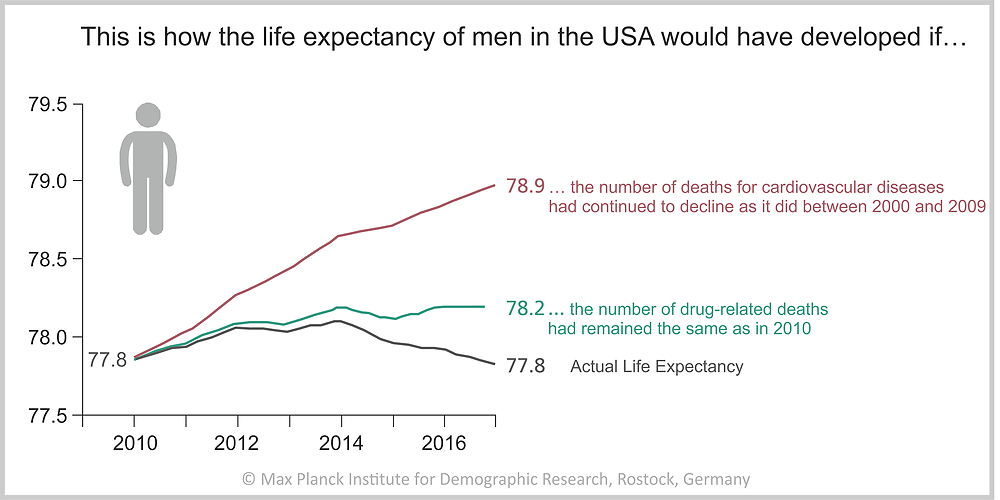
Life expectancy in the USA is no longer rising. This stagnation has long been largely attributed to increasing numbers of drug deaths due to the opioid crisis. But Mikko Myrskylä and colleagues have now shown that deaths due to cardiovascular diseases are in fact having a much larger impact on life expectancy.
Over each decade of the past century, life expectancy in the USA rose by two years. This is no longer the case. Since 2010, life expectancy has not improved. Until now, this fact has mainly been attributed to the rising number of drug deaths due to the opioid crisis.
But Mikko Myrskylä, Director of the Max Planck Institute for Demographic Research in Rostock, together with Neil Mehta and Leah Abrams from University of Michigan have shown a stall in declining cardiovascular deaths is a more likely explanation for the end of stagnation of life expectancy. They have published their findings in the scientific journal PNAS.
Drug-related deaths have little influence on life expectancy
The remaining life expectancy of 25-year-old Americans would have risen by 1.1 years between 2010 and 2017 if deaths from cardiovascular diseases had declined as much over that period as they did between 2000 and 2009.
By contrast, the rising number of drug-related deaths had a much smaller influence on life expectancy. “If the number of drug-related deaths had remained constant after 2010, male life expectancy would have risen just 0.4 years, or by around five months,” Mikko Myrskylä explained. Thus, over the long run, reducing the number of drug-related deaths will not be sufficient to ensure that life expectancy in the USA resumes its upward trajectory.



Leave a Reply